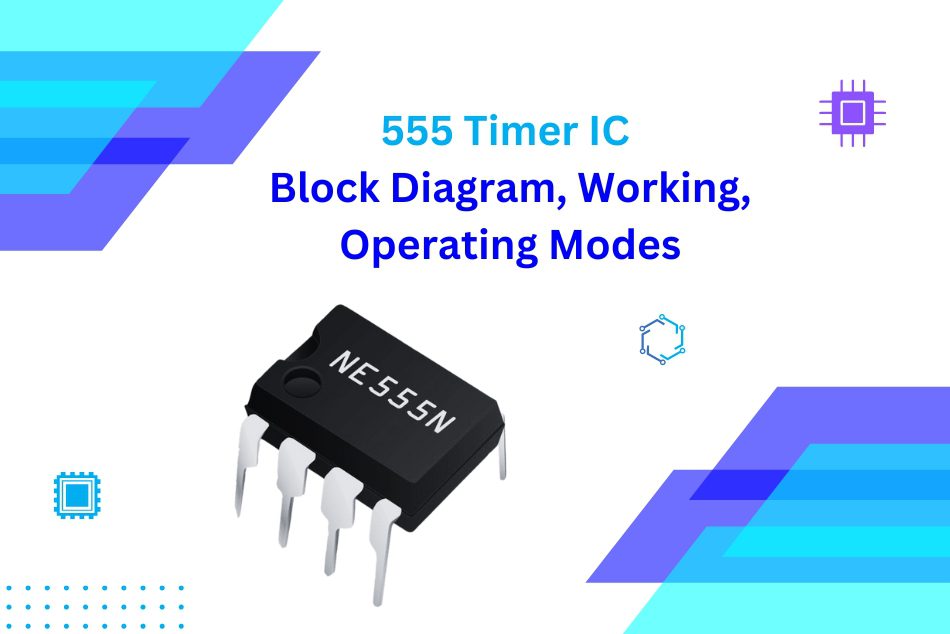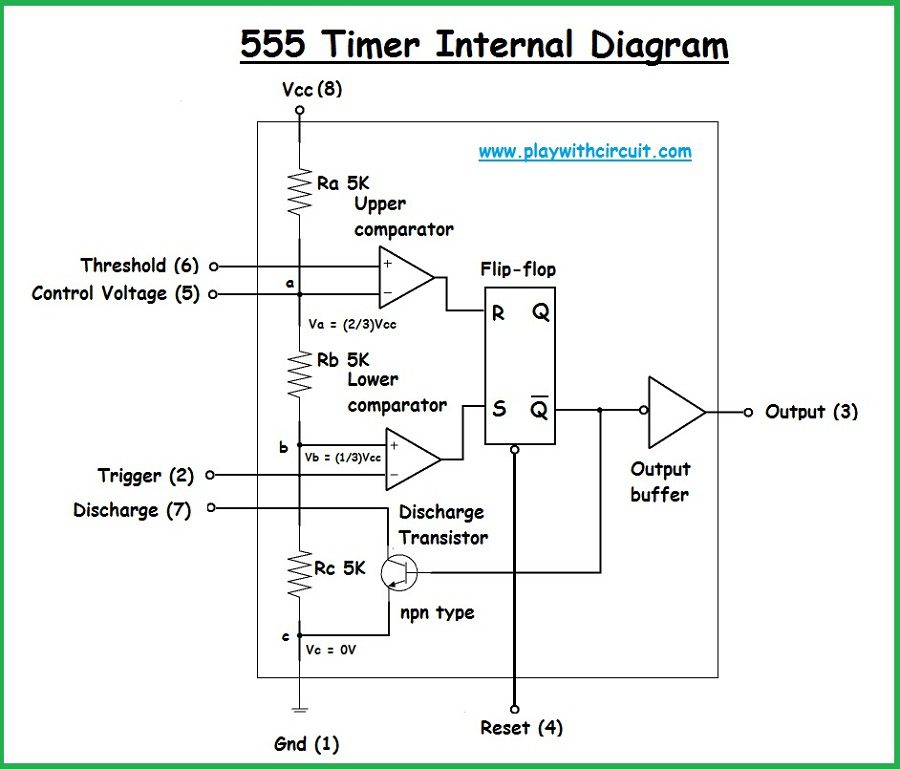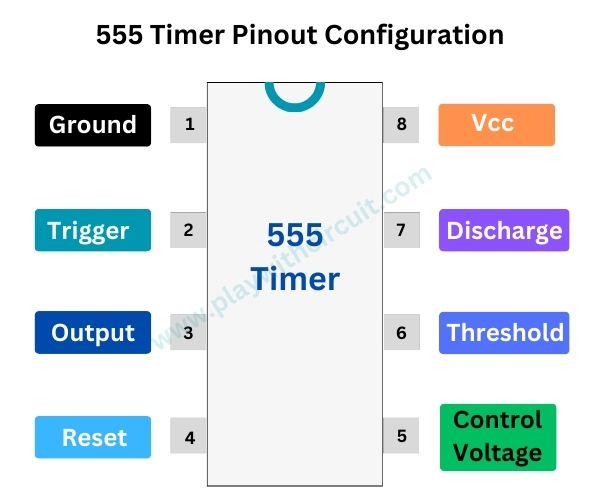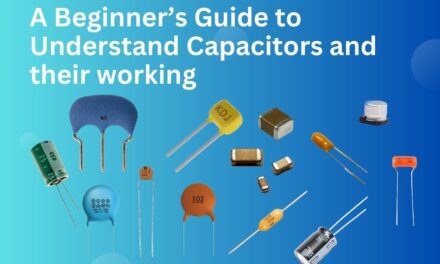555 Timer, as the name suggests, is an IC used for timing operations. It is a monolithic timing circuit that produces highly stable time delays or oscillations with great accuracy. In 555 Timer three 5K resistors are interconnected to provide a reference voltage for two internal comparators, that’s why it is called 555 Timer. 555 Timer IC was invented by Signetic Corporation in 1970. Due to its ease of use and low cost, it has been used in a wide range of applications. This IC is used as an astable and monostable multivibrator in waveform generators, digital logic probes, dc-dc converter, voltage regulator, tachometer, temperature measurement and controlled devices, etc.
Astable Mode of Operation of 555 timer
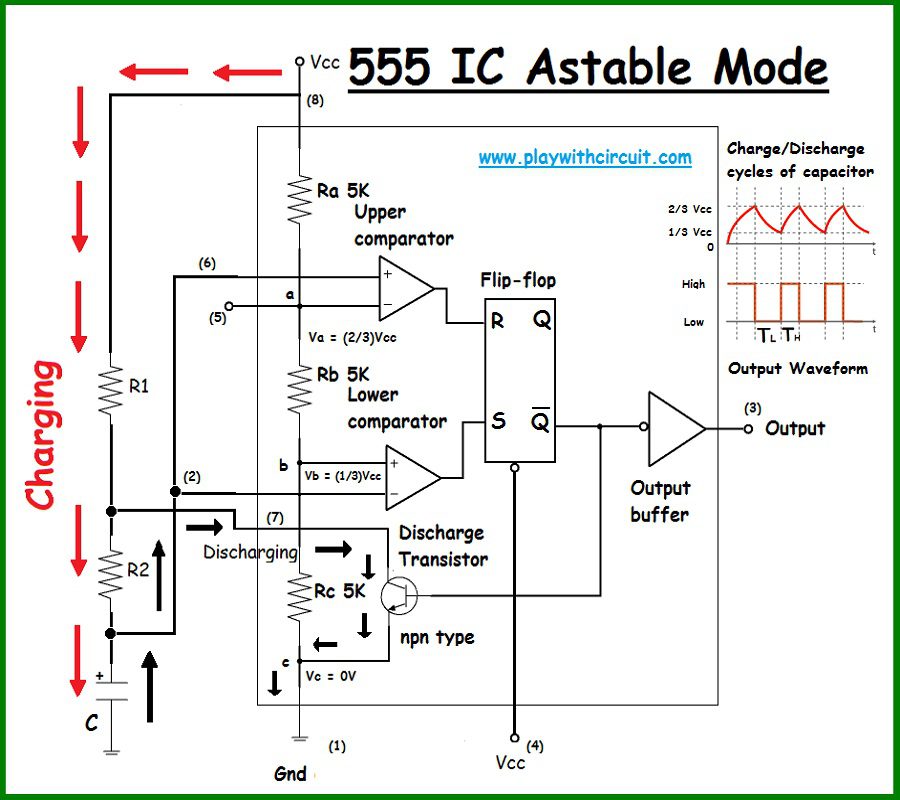
Astable mode as the name suggests, the output of this mode is oscillating between ‘HIGH’ and ‘LOW’ and the frequency of oscillation depends upon an external RC network connected to its pins.
There are two resistors ‘R1’ and ‘R2’ and one capacitor ‘C’. ‘R1’ is connected between pin 8 and pin 7. ‘R2’ is connected between pin 7 and pin 6. Pin 2 and 6 are shorted. Capacitor ‘C’ is connected between pin 6 and the Ground.
Initially when Power is turned ‘ON’, the potential across the capacitor is zero and hence potential at junction ‘b’ is greater than the potential at pin 2 due to which the Output of the lower comparator turns ‘HIGH’ which ‘SETS’ the output of the Flip-flop, i.e., Q is ‘HIGH’ and Q’ is ‘LOW’ which is then fed into output buffer which inverts it and the final output is ‘HIGH’.
Now when the voltage across the capacitor exceeds 1/3 Vcc, it doesn’t have any effect on the lower comparator. Although the output of the lower comparator is ‘LOW’, it doesn’t affect the output of the S-R flip-flop.
But as soon as voltage across the capacitor exceeds 2/3 of Vcc the voltage across the positive terminal exceeds voltage across the negative terminal of the upper comparator, which in turn ‘RESETS’ the flip-flop i.e Q turns ‘LOW’ which implies Q’ turns ‘HIGH’ which is fed into Output buffer which inverts it and hence output turns ‘LOW’.
Now what we get from the above operation is when the capacitor charges Output is ‘HIGH’.
Now Q’ which is ‘HIGH’ is also fed to base of npn transitor which in turns provides less resistance (equivalent to zero) for current rather than going through resistance ‘R2’ and Capacitor ‘C’. Hence all the current which previously was flowing through R2 and C now flows through transistor, also the potential across Capacitor ‘C’ starts decreasing because it is also discharging through Discharge transistor.
Now as the capacitor is discharging a point came in this operation when voltage across capacitor turns less than 1/3 Vcc which implies voltage at negative input is less than voltage at positive input, which turns the output of lower comparator ‘HIGH’ and thereby setting the output of flip flop i.e Q is ‘HIGH’ and Q’ is ‘LOW’ , now Q’ is also being fed to base of discharge transistor which turns ‘Off’ thereby discharging stops.
Now what we get from the above operation is when the capacitor discharges output turns ‘LOW’.
Also Q’ is fed to the output buffer and hence voltage at pin 3 turns ‘HIGH’.
This charging and discharging of the capacitor go on and on until power is turned ‘OFF’ or any component failure occurs.
Mathematical Derivation
Here we will not go very deep inside the mathematics of charging and discharging curves we just need the output of this astable operation i.e,
Time for which pulse is ‘HIGH’ when current flows through R1, R2, and C at charging time i.e.,
T (high) = 0.693(R1+R2)*C
Time for which pulse is ‘LOW’ when current flows through R2 and C at time of discharging i.e.,
T (low) = 0.693(R2)*C
Hence, T(total) = T(high) + T(low)
T = 0.693(R1+2R2)C
F = 1/T = 1.44/((R1+2R2)C)
Duty Cycle = T(high)/T(total)
= 0.693(R1+R2)C/0.693(R1+2R2)C
= (R1+R2)/(R1+2R2)
from the above equation, it seems that the duty cycle is more than 50%.
Let’s say R1 is very less than R2
i.e., if R1 = 1K, then R2 = 100K
Duty Cycle = 101/201 = 0.502 which is approximately equal to 0.5. That’s what we want.
Now this astable multivibrator can be used as a clock source for other circuits which are clock dependent for their operation.
Now for a higher frequency, we need to keep capacitance ‘C’ low for lower frequency, we need to keep ‘C’ high as simple as that.
Monostable Mode of Operation of 555 timer
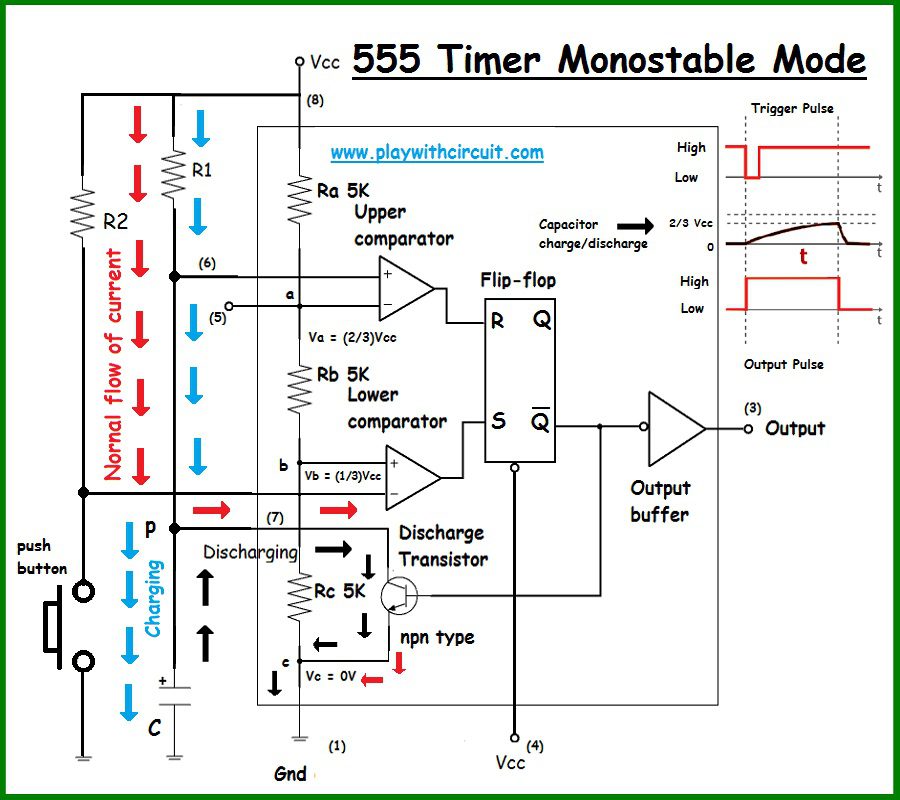
Bistable Mode of operation of 555 timer
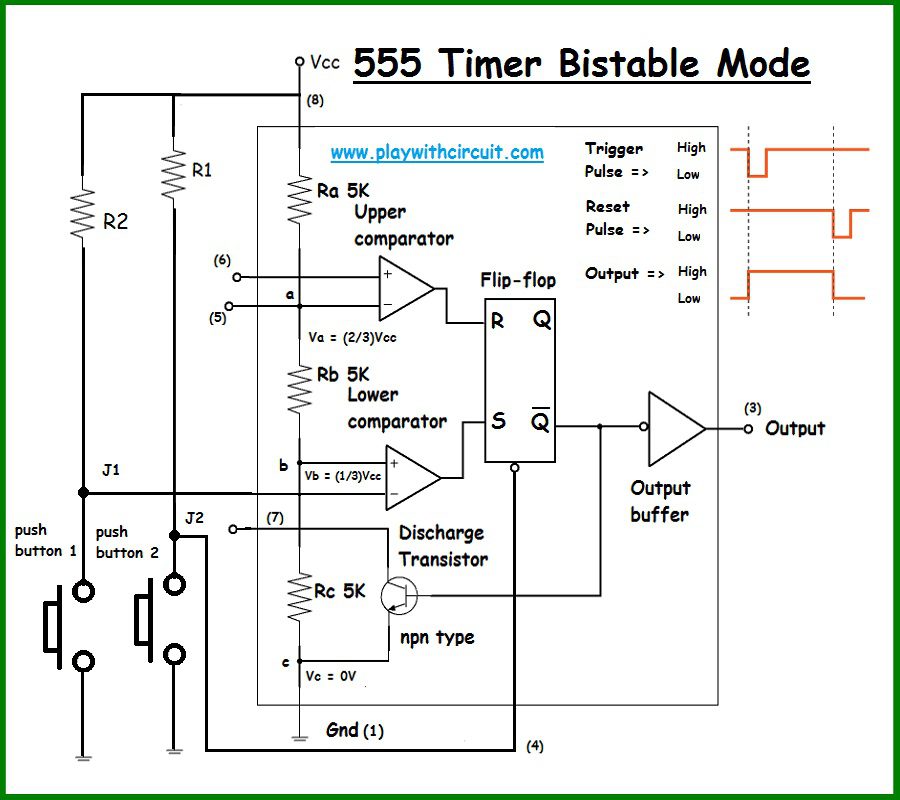
FAQ’S
Why is 555 IC called a universal timer?
The 555 timer IC is commonly referred to as the “universal timer” because of its widespread use and versatility in a wide range of electronic applications.
Why is IC 555 called a timer circuit?
The IC 555 is called a because its primary application is to generate accurate time delays or intervals.
What are 555 timers used for?
The 555 timer IC can be used in electronic circuits for various timing and oscillator applications. It is used in various timers, pulse generators, lamp flashers, logic clocks, and oscillators.

